Credit: NASA/JPL-Caltech
May Skywatching Highlights
What’s Up for May? This month, a rocky planet round-up, and a super blood Moon eclipse!
- May 3: The bright planet Saturn will appear to the left of the half-lit Moon.
- May 4: The Moon forms a large triangle in the east-southeast with the bright planets Saturn and Jupiter.
- Mid-May: You’ll have an opportunity to see all four of the rocky, inner planets of our solar system at the same time, with your own eyes.
- May 26: Watch for a total lunar eclipse during the second supermoon of 2021.
Beginning mid-May, if you can find a clear view toward the western horizon, you’ll have an opportunity to see all four of the rocky, inner planets of our solar system at the same time, with your own eyes.
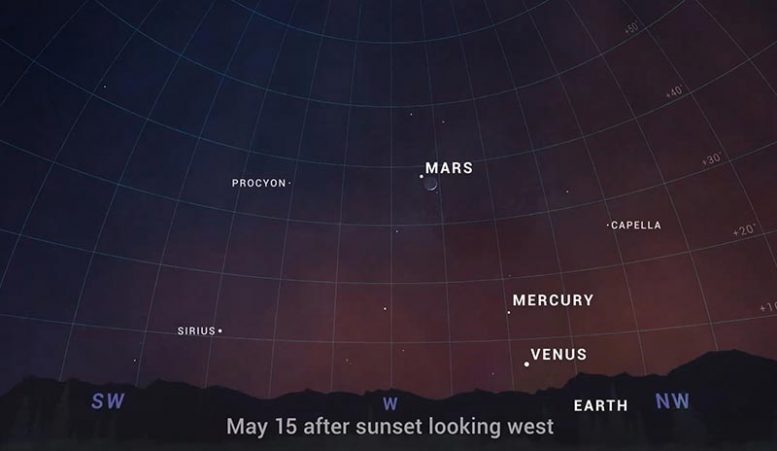
See all four inner planets (including Earth!) after sunset, beginning mid-May. Credit: NASA/JPL-Caltech
Starting around May 14th, cast your gaze to the west about half an hour after sunset, local time to see if you can spot Mercury, Venus, and Mars. (And well, Earth is kind of hard to miss.)
To see near the horizon, you need an unobstructed view – free of nearby trees and buildings. Some of the best places for this are the shores of lakes or the beach, open plains, or high up on a mountain or tall building.
In addition to the planets, from around the 14th through the 17th, the crescent Moon joins the party for a lovely planetary tableau. Now, Venus will be really low in the sky. (It’ll be easier to observe on its own later in the summer.) But for now, take advantage of this opportunity to observe all of the inner planets in a single view.
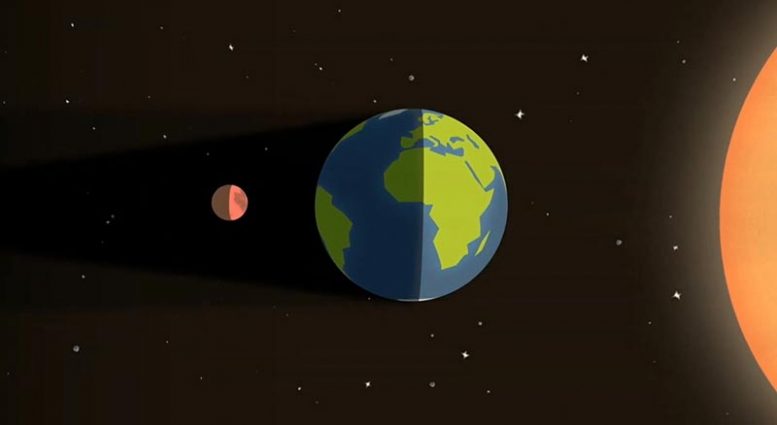
The Moon usually appears reddish in color during lunar eclipses because of sunlight filtered through Earth’s atmosphere. Credit: NASA’s Scientific Visualization Studio
May 26 brings a total lunar eclipse. Over several hours, the Moon will pass through Earth’s shadow, causing it to darken and usually become reddish in color. The red color comes from sunlight filtering through Earth’s atmosphere – a ring of light created by all the sunrises and sunsets happening around our planet at that time.
Because of the reddish color, a lunar eclipse is often called a “blood moon.” Just how red it will look is hard to predict, but dust in the atmosphere can have an effect. (And keep in mind there have been a couple of prominent volcanic eruptions recently.)
Lunar eclipses take place when the Moon is full, and this full Moon happens when the Moon is also near its closest point to Earth in its orbit, often called a “supermoon.”
Unlike solar eclipses, which you should never look at, it’s safe to view lunar eclipses with your eyes. And unlike solar eclipses, which tend to have a narrower viewing path, lunar eclipses are at least partly visible anywhere on the planet’s night side.
Now, eclipses happen at the same moment no matter where you are on Earth, but what time your clock reads during the eclipse depends, of course, on your time zone. The best viewing for this eclipse is in the Pacific Rim – that’s the western parts of the Americas, Australia and New Zealand, and Eastern Asia. For the U.S., the best viewing will be in Hawaii, Alaska, and the western states.
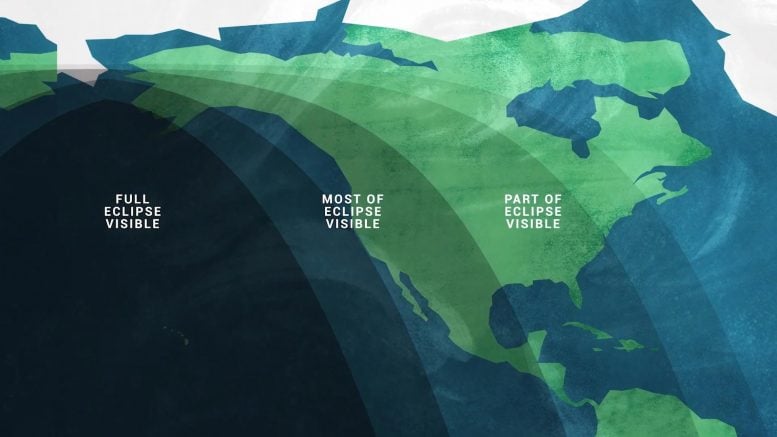
The May 2021 lunar eclipse will be best viewed in Hawaii, Alaska, and the western U.S. states. Credit: NASA/JPL-Caltech
For the Eastern U.S., the eclipse begins for you during dawn twilight. You may be able to observe the first part of the eclipse as the Moon just starts to darken, but the Moon will be near or on the horizon as Earth’s shadow begins to cover it.
The farther west you are, the more of the eclipse you’ll be able to see before the Moon sets that morning. Those in the western half of the country will be able to see almost the entire eclipse.
So if you’re in the path of this eclipse, check your local times for the best viewing near you. And if you’re in the U.S., be prepared to get up early if you want to see this rare celestial event: a super blood moon eclipse.
Daily Guide
May 1: May Day
Saturday, May 1, 2021, will be May Day. We currently divide the year into four seasons based upon the solstices and equinoxes, with summer starting on the summer solstice in June. This approximates summer as the quarter of the year with the warmest temperatures.
Much of pre-Christian northern Europe celebrated “cross-quarter days” – halfway between the solstices and equinoxes – dividing the seasons on these days. Using this older definition, summer was the quarter of the year with the longest daily periods of daylight, starting on Beltane, traditionally celebrated on May 1st (the middle of our spring). Many of the European May Day traditions trace back to these earlier celebrations of the start of summer.
May 3
Monday morning, May 3, 2021, the planet Saturn will appear to the left of the half-lit Moon. Saturn will appear about 8 degrees to the left of the Moon as the pair rises in the east-southeast at 2:22 a.m. EDT. Saturn will appear about 7 degrees to the upper left of the Moon as morning twilight begins at 5:03 a.m.
Monday afternoon, the waning Moon will appear half-full as it reaches its last quarter at 3:50 p.m. EDT.
May 4
By Tuesday morning, May 4, 2021, the Moon will have shifted to form a large triangle in the east-southeast with the planets Saturn and Jupiter. Saturn will rise first at 2:17 a.m. EDT. The Moon and Jupiter will rise to the lower left of Saturn at about the same time at 3:01 and 3:02 a.m., with Jupiter about 10 degrees farther to the left of the Moon. The Moon will appear about 18 degrees above the southeastern horizon by the time morning twilight begins at 5:02 a.m.
May 5
By Wednesday morning, May 5, 2021, the Moon will appear to have shifted to about 6 degrees below Jupiter, rising in the east-southeast at 3:33 a.m. EDT about 1.5 hours before the start of morning twilight at 5:01 a.m., with Saturn appearing farther to the upper right.
May 11
On Tuesday afternoon, May 11, 2021, at about 1:24 p.m. EDT (2021-May-11 17:24 UTC with 12 minutes uncertainty), Near-Earth Object (2021 GK1), between 33 to 74 feet (10 and 23 meters) across, will pass the Earth at 1.5 lunar distances traveling at 4,500 miles per hour (2.01 kilometers per second).
Tuesday at 3:00 p.m. EDT will be the new Moon, when the Moon passes between the Earth and the Sun and will not be visible from the Earth. Since this New Moon is near when the Moon is farthest from the Earth in its orbit, some have started using the term “micro-moon” to indicate the opposite of a “supermoon.”
Tuesday at 5:54 p.m. EDT, the Moon will be at apogee, its farthest from the Earth for this orbit.
May 11-12
The day of – or the day after – the New Moon marks the start of the new month for most lunisolar calendars. Sundown on May 11, 2021, marks the start of Sivan in the Hebrew calendar. The fourth month of the Chinese calendar starts on May 12, 2021 (at midnight in China’s time zone, which is 12 hours ahead of EDT). In the Islamic calendar, the months start with the first sighting of the waxing crescent Moon after the New Moon. Depending upon whether the crescent Moon is actually seen (for many Muslim communities, seen from the holy city of Mecca), Sundown on Wednesday, May 12, 2021, may mark the start of Shawwal and the end of the holy month of Ramadan. This marks the end of the month-long fast of Ramadan and the start of Eid al-Fitr, a feast that can last up to three days in some countries.
Early on Wednesday evening, May 12, 2021, you might be able to see the very thin, waxing crescent Moon low on the horizon in the west-northwest, appearing to the left of Venus from about 30 minutes after sunset until the pair sets about 5 minutes before evening twilight ends. However, the sky might be too bright and the crescent Moon too thin to see without binoculars or a telescope.
May 13
Early on Thursday evening, May 13, 2021, the planet Mercury will appear about 3 degrees to the right of the thin, waxing crescent Moon. The pair will appear about 8 degrees above the horizon in the west-northwest as evening twilight ends (at 9:19 p.m. EDT) and Mercury will set first about 47 minutes later at 10:06 p.m. with moonset about 6 minutes later.
May 15
Saturday evening, May 15, 2021, will be when the planet Mercury will reach its highest above the horizon as evening twilight ends for this apparition, about 7 degrees above the west-northwestern horizon.
Also on Saturday evening, the waxing crescent Moon will appear in the west-northwest to the lower right of the planet Mars, with the pair setting around midnight.
May 16
By Sunday night, May 16, 2021, the waxing crescent Moon will have shifted to appear to the lower left of the bright star Pollux, with the pair setting about 3.5 hours after evening twilight ends (Monday morning at around 12:49 a.m. EDT)
May 17
Monday morning, May 17, 2021, will be when the planet Mercury reaches its greatest angular separation from the Sun as seen from the Earth for this apparition (called greatest elongation), appearing half-lit through a large enough telescope. Because the angle of the line between the Sun and Mercury and the horizon changes with the seasons, the date when Mercury and the Sun appear farthest apart as seen from the Earth is not the same as when Mercury appears highest above the horizon as evening twilight ends.
May 19
On Wednesday afternoon, May 19, 2021, the Moon will appear half-full as it reaches its first quarter at 3:13 p.m. EDT. Beginning Wednesday evening, the bright planet Venus will join Mercury above the horizon in the west-northwest as evening twilight ends.
May 19-20
On Wednesday night into Thursday morning, May 19 to 20, the waxing half-full Moon will appear above the bright star Regulus, with Regulus setting first early on Thursday morning at around 2:07 a.m. EDT.
May 23-24
On Sunday night into Monday morning, May 23 to 24, the waxing gibbous Moon will appear to the left of the bright star Spica, initially about 7 degrees apart and separating through the night, with Spica setting first on Monday morning at around 3:52 a.m. EDT.
In late May or early June 2021 (2021-May-25 09:26 UTC with 7 days, 17 hours, 11 minutes uncertainty), Near-Earth Object (2013 VO11), between 19 to 43 feet (6 and 13 meters) across, will pass the Earth at between 3.1 and 43.4 lunar distances (nominally 3.4), traveling at 22,800 miles per hour (10.18 kilometers per second).
May 25
Tuesday night, May 25, 2021, at 9:51 p.m. EDT, the Moon will be at perigee, its closest to the Earth for this orbit.
May 26
May 26 brings a total lunar eclipse. Over several hours, the Moon will pass through Earth’s shadow, causing it to darken and usually become reddish in color. The red color comes from sunlight filtering through Earth’s atmosphere – a ring of light created by all the sunrises and sunsets happening around our planet at that time.
The best viewing for this eclipse is in the Pacific Rim – that’s the western parts of the Americas, Australia and New Zealand, and Eastern Asia. For the U.S., the best viewing will be in Hawaii, Alaska, and the western states.
Lunar eclipses take place when the Moon is full, and this full Moon happens when the Moon is also near its closest point to Earth in its orbit, often called a “supermoon.”
This is the second supermoon of 2021 and it occurs at 7:14 a.m. EDT Wednesday. (The first supermoon of the year was on April 26.) The Moon will appear full from Monday evening through Thursday morning.
Preston Dyches, Christopher Harris, and Lisa Poje are the science communicators and space enthusiasts who produce this monthly video series for NASA at the Jet Propulsion Laboratory. Additional astronomy subject matter guidance is provided by Bill Dunford, Gary Spiers, and Lyle Tavernier.
Retired NASA Program Manager Gordon Johnston provides the daily guide.

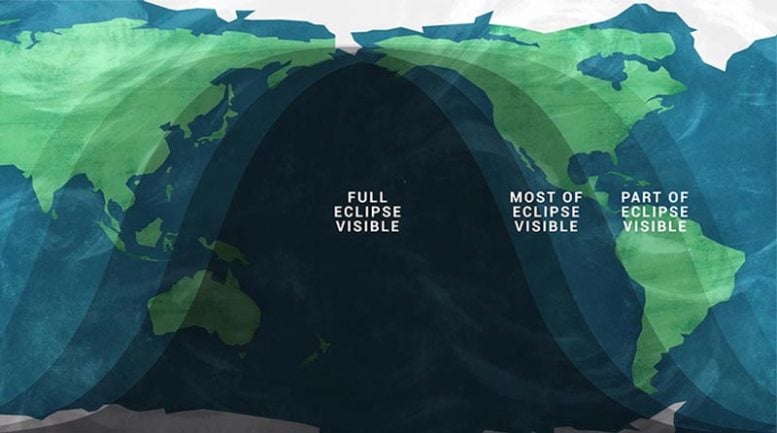






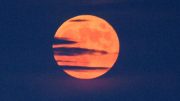

I love you NASA iam from Bangladesh Narayanganj pma
Amazing..! Thank you team NASA for all the work you do so we are able to witness and enjoy our up coming celestial events. 😊 Angy * Perth, Western Australia
You love the devil then
Jerk…hope all your teeth fall out, if they haven’t already.